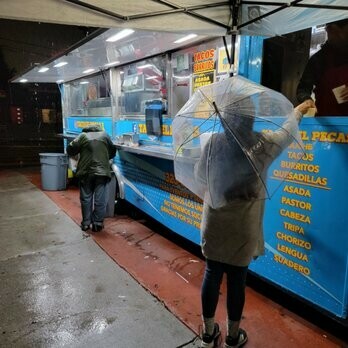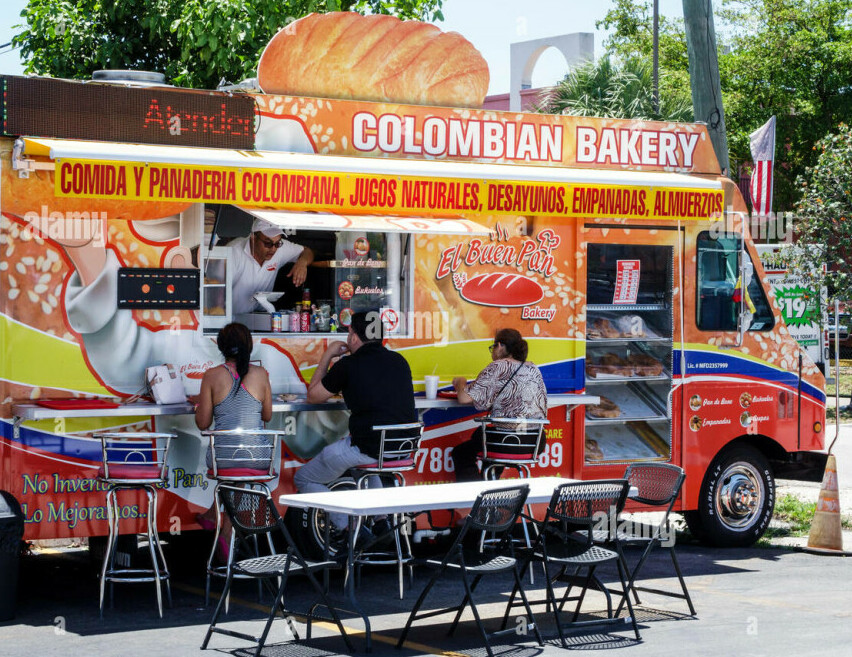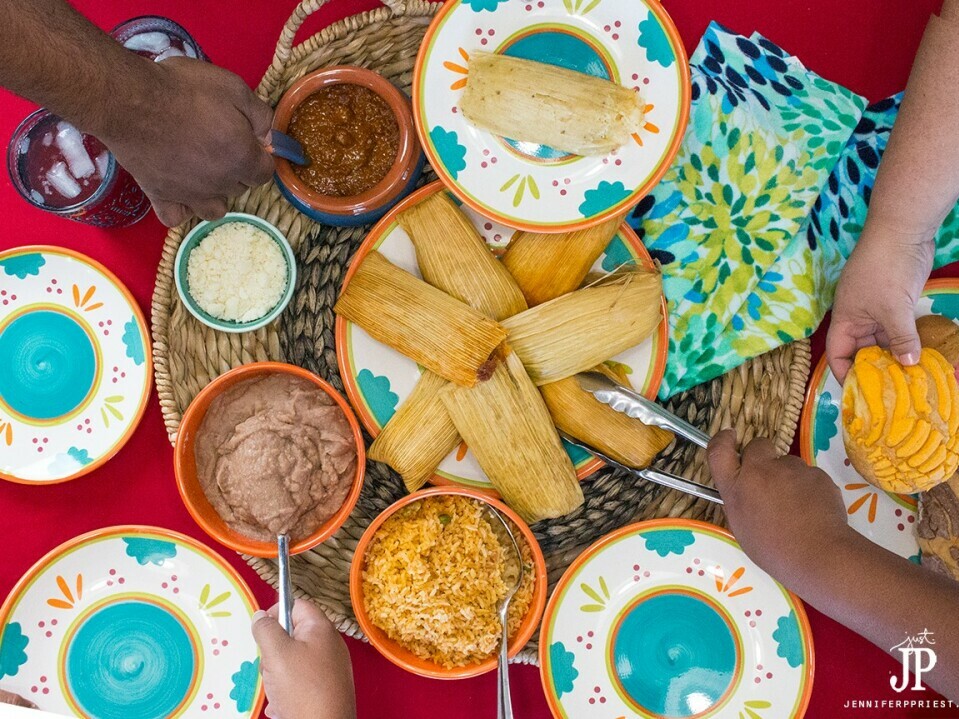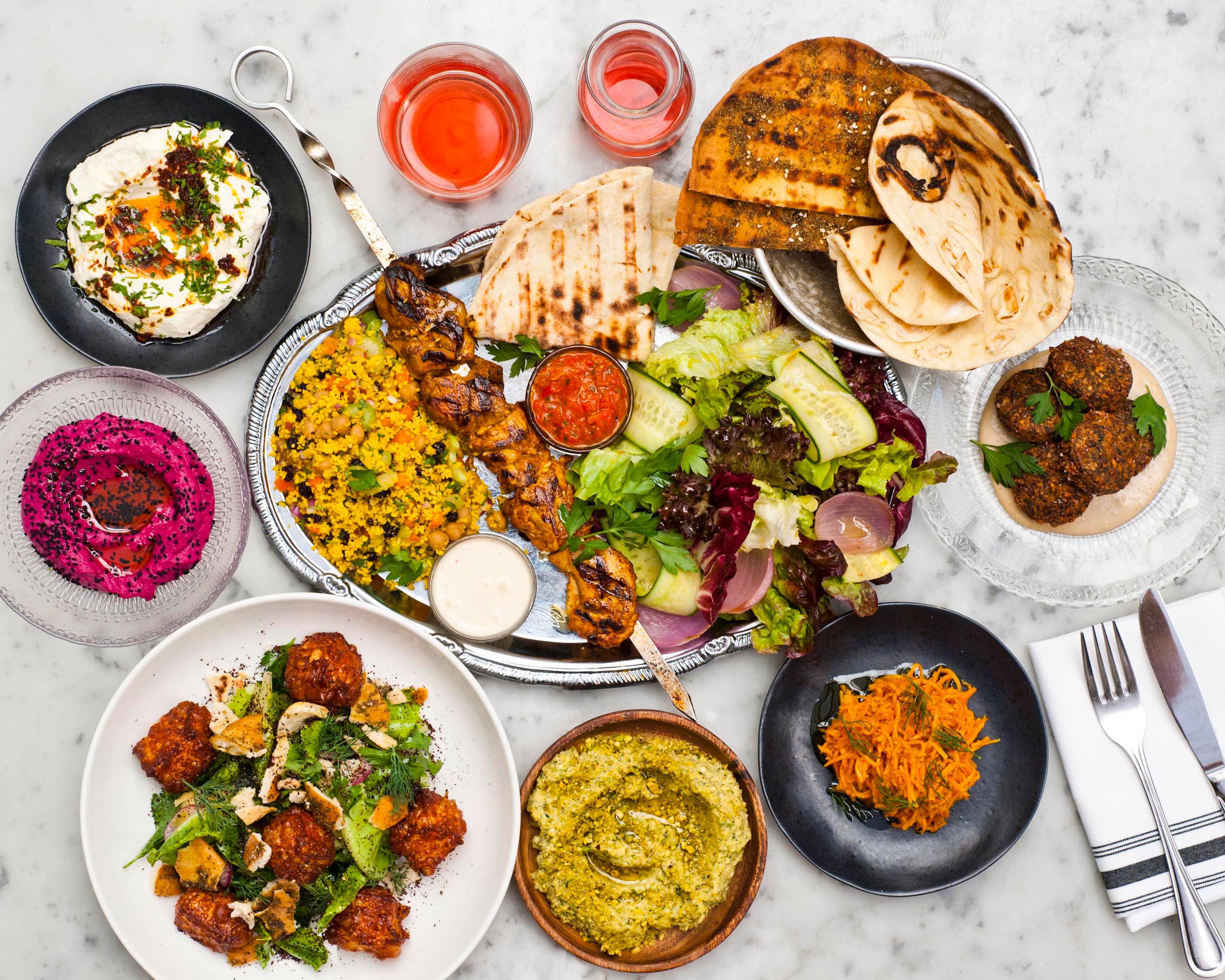Disclaimer: The information provided in this article is for general informational purposes only. It is not intended as professional advice or a substitute for consultation with a qualified nutritionist, dietitian, or medical professional. Always consult your healthcare provider before making any dietary changes or consuming specific foods, especially if you have allergies, medical conditions, or dietary restrictions. Always make informed choices based on your personal health circumstances.
Attention all Latin Entrepreneurs! Imagine the vibrant flavors of Latin cuisine served up on bustling city streets or lively festivals.
This is the essence of owning a Latin food truck business.  It’s a venture that combines the love of rich, diverse flavors with the joy of feeding hungry, enthusiastic customers.
It’s a venture that combines the love of rich, diverse flavors with the joy of feeding hungry, enthusiastic customers.
One of the key advantages of owning a Latin food truck business is the undeniable flexibility it offers. As opposed to a stationary restaurant, a food truck filled with different types of Latin foods like Tacos, Quesadillas, or Tomales can travel to where the customers are, be it a sun-drenched beach fest, a local farmer’s market, or a downtown food truck rally.
The startup costs for a food truck can also be markedly lower than those required to open a traditional brick-and-mortar restaurant. This makes it an excellent alternative for budding entrepreneurs who have a passion for Latin food but might not have the capital for a fixed location.
Moreover, the street food culture has never been more alive and enticing. There’s a growing appreciation for quick, affordable, yet delectable meals served in a more casual, approachable environment.

A Latin food truck taps right into this trend, attracting a diverse clientele looking for a quick culinary escape.
The Latin food truck not only adds to the community’s dynamic food scene but also provides a personal sense of accomplishment. To see customers relish a taco, empanada, or arepa and come back for more is to see a small business dream flourish.
Savoring the Past: The History of Latin Food Trucks
Digging into the roots of Latin food trucks offers a rich mosaic of cultural significance and entrepreneurial spirit. These mobile eateries didn’t just appear overnight; they’re an evolution of deep-rooted traditions, blending the casual dining of Latin American streets with the dynamic setting of modern markets.
In many Latin American countries, street food is a cornerstone of daily life, with vendors offering a plethora of dishes that mirror the diversity and vibrancy of the region. These traditions laid the groundwork for Latin food trucks, which began as simple carts and evolved into sophisticated culinary establishments on wheels.
The influence of Latin American street food can be seen in the menus of food trucks across the globe. Tacos, arepas, and empanadas have transcended borders, becoming mainstays in the fast-casual dining scene. It’s not just the food that’s been exported, but the whole experience of eating authentically prepared meals in an informal, accessible environment. This photo captures South Miami residents enjoying comfort food from a Colombian bakery truck vendor.

In the United States, the food truck movement really picked up momentum in the late 2000s. Latin food trucks were among the pioneers, capitalizing on the fusion food trend by incorporating diverse Latin American flavors into local dishes. This experimentation led to a boom in popularity, transforming the food truck from a novelty to an integral part of urban dining culture.
Today, Latin food trucks have become more than a convenience; they’ve grown into culinary destinations. They serve as incubators for up-and-coming chefs and as a testament to the ever-evolving tastes of food enthusiasts everywhere. Not everyone can whip up a delicious pupusa! This Central American dish requires skill and talent, a stepping stone to becoming a truly great cook.


Navigating the Spice Route: Legalities of Food Truck Entrepreneurship
Now, let’s pivot to what it takes legally to keep these kitchens on wheels rolling, as we explore the laws and regulations that hold the food truck industry together in the next section.
When you’re fueled by passion and dreams of a bustling Latin food truck, it’s essential to pump the brakes for a moment and consider the legal map you’ll need to navigate. Unlike a brick-and-mortar restaurant, a food truck adds an extra layer of mobility to the mix, which means more permits and regulations to comply with.
- ZONING LAWS: You can’t just park anywhere and expect to open shop. Each city has its own set of rules about where food trucks can operate. You might find certain streets are off-limits or that there are specific zones dedicated to street vendors.
- Health department REQUIREMENTS: This can seem daunting, but your main goal here is to ensure the safety and well-being of your customers. Health codes govern the preparation, handling, and storage of food. Compliance inspections can happen at any time, so maintaining high standards is crucial for the longevity of your business.
- Securing the NECESSARY PERMITS AND LICENSES: This is akin to getting your passport and visa before traveling – you’re not going anywhere without them. This includes business licenses, food handler permits, and possibly a mobile food facility permit. Each of these has its own application process and fees.
- INSURANCE: Apart from the standard liability insurance, consider vehicle insurance for your truck, and property insurance for your equipment.
- Food Safety: Lastly, best practices for food safety and handling are your recipe for keeping customers safe and satisfied. Regularly train your staff (and yourself), keep your workspaces clean, and always stay current with food safety regulations.
- For more specific details on these prerequisites, such as zoning laws, health department requirements, permits and licenses, insurance, and food safety, check your local county websites.
Putting this effort in at the start lays a stable foundation for your business and will save you from potential headaches down the road. Once you’ve successfully tackled the legal aspect, the exciting part begins – deciding what delectable Latin treats you’ll serve.
A Feast on Wheels: What to Serve from Your Latin Food Truck
Deciding what to serve on a Latin food truck is more than just a matter of taste; it’s about capturing the vibrant essence of Latin America in every bite. The menu sets the stage for the experience you want to offer, connecting people with a variety of colorful and flavorful dishes that boast a rich culinary heritage.
Starting with appetizers, think of small bites like empanadas or arepas, stuffed with savory fillings that are easy to eat on the go. Tacos and quesadillas are mainstays, offering versatility with a range of fillings such as carnitas, barbacoa, or even vegetarian options like sauteed vegetables or beans. These dishes not only resonate with authenticity but also allow for quick service and a customizable experience.
For a heartier fare, a Latin food truck can feature items such as burritos, tortas, and even paella. Each dish can be adapted to local tastes and dietary preferences, ensuring inclusivity. Don’t forget to consider the vegetarians, gluten-free, and health-conscious customers by offering dishes that cater to these needs.
What’s a meal without something to wash it down? The drink selection on a Latin food truck can include classics like horchata, freshly squeezed juices, or tropical fruit smoothies, among others. Not only do they quench thirst, but they also serve as a perfect pairing to the spices and flavors of the food you’ll serve. The drink selection on a Latin food truck can include classics like horchata, freshly squeezed juices, or tropical fruit smoothies.

Chilling with Flavor: The Potential of a Latin Ice Cream Truck
You might be pondering the expansion of Latin culinary treats beyond tacos and empanadas. Imagine a mobile haven of frozen delights that cater to the sweet tooth of your clientele. A Latin ice cream truck is a novel twist in the food truck industry, capable of drawing crowds with a penchant for both novelty and nostalgia.
Before diving into this frosty venture, assess the market for indulgence in Latin-inspired ice cream. Traditional flavors like dulce de leche, horchata, and tropical fruit sorbets are not just summer fare; they can compose a year-round menu. Yet, venturing into the ice cream business requires careful consideration of local climates and customer patterns to ensure demand remains as steady as possible.

When exploring this chilly path, weigh the pros and cons. Upsides include lower initial food costs compared to a full meal service truck, and the universal appeal of ice cream may lead to an easier entry into the market. However, there is also the real challenge of seasonality, with peak sales often tied to warmer weather.
Identifying distinctive flavors is crucial. Alongside classics, shake things up with flavors that are authentic to Latin culture but perhaps new or rare in your area, such as guanabana, tamarindo, or tejocote. Think about pairing these unique offerings with familiar favorites to create a menu that’s both exotic and approachable.

In the next section, I will discuss the sourcing process for your flavorful venture. This includes pinpointing where to purchase the best quality ingredients and reliable equipment. Achieving success goes beyond tempting taste buds; it requires a seamless supply chain to keep your Latin ice cream truck in smooth, nonstop operation.
The Ingredients of Success: Sourcing for Your Latin Food Truck
Setting up a Latin food truck means more than just preparing delicious meals; it’s about building a solid foundation with quality ingredients and reliable equipment. You’re crafting an experience that hinges on authenticity and flavor, and the pillars of that experience are the suppliers and equipment you choose.
Focus on Quality and Authenticity:
- Specialty Latin American markets: These markets often offer a wider variety of fresh and dried ingredients specific to Latin cuisine, sourced directly from different regions. Look for markets specializing in the specific cuisines you want to focus on, like Mexican, Colombian, or Peruvian. There is such a supermarket in Pembroke Pines FL: Super Bravo Flamingo.
- Supermarkets/Grocery Stores in your local area: These stores usually carry a variety of different types of Latin Food products(Farmer Joe’s ) (The Fresh Market | Delicious Easy Meals | Seasonal Ingredients) Walmart, Aldi, Publix, etc…
- Restaurant supply stores: Some restaurant supply stores cater to Latin American restaurants and carry bulk quantities of essential ingredients like beans, rice, tortillas, and spices. Check online reviews and local recommendations to find stores with a good reputation.
- Ethnic grocery stores: Many neighborhoods have stores catering to different immigrant communities.
These stores can be a valuable source of fresh ingredients like vegetables, fruits, and meats specific to Latin American cooking.

Desi Bazaar: 264 Town Center Lane, Glendale Heights, IL, (630) 893-8049 Hours: Monday-Sunday 11:00am – 8:00pm Desi Bazaar Groceries
If you’re new to the area, search for “ethnic foods/grocery stores” plus your city and zip code in Google or Yahoo to find nearby options.
Starting your Latin Vending Truck Business on a budget?
No worries! If you’re just beginning and funds are tight, consider sourcing ingredients from stores like Dollar Tree, Dollar General, or other local bargain shops that offer affordable ethnic food options. This strategy can tide you over until your business starts turning a profit and allows you to explore more specialized suppliers.

Consider Budget and Convenience:
- Wholesale clubs: If you need to buy ingredients in bulk and have a membership, wholesale clubs like Costco or Sam’s Club can offer good deals on basic staples like rice, beans, and other cooking ingredients.
El Latino Foods: Your Wholesale Choice for Hispanic Groceries
Intermark Foods, known as El Latino Foods, offers a convenient one-stop shop for your wholesale Hispanic grocery needs. Located at 1355 NW 97th Ave in Doral, Florida (33172), they operate Monday through Friday from 9:00 AM to 5:00 PM Eastern Time.
Contact:
- Phone: (305) 718-8754
- SMS: (305) 297-3920
- Website: https://ellatinofoods.shop/contact/
Delivery:
Yes, El Latino Foods offers delivery services within the United States. Please visit their website or contact them directly for more information on delivery options and fees.
- Online retailers: Several online retailers specialize in Latin American ingredients, offering convenient delivery options. However, be mindful of shipping costs and ensure freshness upon arrival. Amazon is a good source to tap into for some of these Latin food ingredients.
Build Relationships with Suppliers:
- Visit local farms and producers: Connecting with local farmers and producers can be a great way to source fresh, high-quality ingredients and support your community. Look for farmers’ markets or farm-to-table initiatives in your area.
- Source directly with small farms and producers specializing in Latin ingredients. This fosters ethical sourcing, promotes sustainable practices, and often yields the freshest, most flavorful ingredients.
Developing relationships with local Farmers, food producers, and vendors can provide you with fresh and, often, more affordable produce and meats. Consider too, the story that comes with these ingredients; locality can be a compelling part of your food truck’s narrative.
Equipment Suggestions for Your New Latin Food Truck
The equipment for your food truck is as vital as the ingredients. A dependable cooker, refrigerator, and prep areas are crucial. Efficiency is key in a food truck’s confined space, so invest in equipment that maximizes your workflow and food quality.
- Griddle: A versatile cooking surface to make fajitas, quesadillas, arepas and more. Great for a variety of Latin dishes.
- Comal: A traditional Mexican cast iron or volcanic rock griddle to cook tortillas, meats, and veggies.
- Steamer: To cook rice, vegetables, and other dishes. Essential for many Latin recipes.
- Fryer: For frying plantains, churros, and other popular Latin treats.
- Refrigerator & Freezer: To properly store food and drinks. Temperature control is a must.
- Prep Tables: Used to chop, slice, dice ingredients, and prepare recipes.
- Utensils: Knives, forks, spoons, tongs – a variety needed to cook and serve.
- Dishes & Glasses: To serve and display your delicious food and drinks.
- Food Truck Permit: Required paperwork to legally operate your mobile restaurant.
- Tortilla Press: For homemade tortillas to go with many Latin dishes.
- Molcajete: Traditional mortar & pestle to grind spices and make salsa.
- Display Case: Showcase your dishes to highlight offerings.
- Sound System: Play festive Latin music to attract more customers!
Bonus Tip: Space and budget are precious commodities in a food truck kitchen. Opting for multi-functional equipment can be a game-changer. Don’t limit your culinary creativity by using limited equipment. Explore multi-functional options like this Griddle/charbroiler combo to maximize your food truck’s potential!

As important as what you buy, is how you manage it. Good inventory practices will reduce waste and ensure you’re always stocked for business. Thinking ahead to prevent shortages, especially of your most popular items, means happy customers and a healthier bottom line.
Remember that the Latin food you serve is just the delicious end product of a well-orchestrated behind-the-scenes operation. Aligning with quality suppliers and having the right tools at hand are the first steps in creating a business that customers trust and return to.
Invest in high-quality, compact equipment that maximizes your workflow and food quality in the limited space of a food truck. Prioritize efficiency and choose appliances that are easy to clean and maintain. With the right equipment, you can create a successful and delicious food truck operation!
Taste Buds on Tour: Identifying Your Latin Food Truck’s Audience
It’s crucial to know the audience you will be cooking for. Your menu might be bursting with flavorful empanadas, tangy ceviche, and vibrant tacos, but if you don’t understand your audience, these dishes might not reach their full potential. Identifying and catering to your ideal customers is a step you cannot afford to skip when you are running your Latin food truck business.
- First, analyze your demographics. This means looking at age groups, cultural backgrounds, and even the occupations of the people in the areas you plan to serve. College areas might prefer quick, budget-friendly bites, while business districts might value healthier, upscale options.
- Then, my focus shifts to feeding the preferences of locals versus tourists. Residents might crave the comfort of staple dishes whereas tourists are often after an exotic dining experience. A smart move is to offer a menu that satisfies the curiosity of visitors while remaining true to the tastes of the community.

What website platforms can you use to promote your Latin Foods Truck Vendor Business on Social Media?
Running a food truck is all about building a loyal community of customers. Using these popular platforms will be crucial for showing off your authentic cuisine:
Instagram:
- Eye-catching visuals: Share mouthwatering photos and short video clips showcasing your colorful dishes, vibrant truck decor, and preparation process.
- Menu and secrets: Reveal new menu items, offer “chef’s secrets”, and promote special offers.
Facebook:
- Community building: Leverage Facebook events and groups to connect with local Latin food enthusiasts.
- Targeted advertising: Reach a wider audience in your area through targeted Facebook ads showcasing your empanadas, tamales, and other specialties.
TikTok:
- Recipe hacks & trends: Post quick, engaging recipe videos featuring popular Latin dishes with trendy music and captivating captions.
- Boost brand awareness: Share fun glimpses of your food truck life and spread the word about your business.
X (formerly known Twitter):
- Real-time updates: Share your daily specials, announce your location, and engage with customers by responding to questions and comments.
- Personal touch: Create a more personal connection with your customers by interacting directly on Twitter.
YouTube:
- In-depth tutorials: Offer detailed cooking tutorials for traditional Latin dishes, allowing fans to recreate your magic at home (tacos al pastor anyone?).
- Brand expertise: Position yourself as an authority on Latin cuisine by showcasing your culinary skills and passion.
Remember:
- Consistency is key: Post regularly across all platforms to stay top-of-mind with your audience.
- Authenticity matters: Let your personality shine through and celebrate the unique flavors and vibes of your Latin food truck.
- Engage with your audience: Respond to comments, answer questions, and encourage interaction to build a loyal community.
What are people in the local scene hungry for? Which Latin dishes are trending or underrepresented? This knowledge helps shape a menu that resonates.

Finally, there’s tremendous value in creating a sense of community around your food truck. You’ll encourage all patrons to engage, whether it’s through cultural events, catering local festivities, or simply fostering relationships. Your goal should be to become more than just a Latin food truck business–Use your business to become a culinary landmark that people will seek out!
With a clear grasp on who your audience is, you will be better equipped to serve up the next section — diving into recipes that not only satisfy hunger but also amplify the cultural richness of Latin cuisine.
Recipes for Success: Innovative and Traditional Latin Cuisine
Success in the food truck industry isn’t just about being in the right place at the right time – it’s also about offering the right flavors that captivate your customers. With Latin cuisine, you’ve got a rich tapestry of tastes to draw from, a blend of ancient traditions and contemporary palates.
Attention Latin Food Truck Owners:
Spice up your menus with this tasty Chicken Mango Taco Recipe! This sweet and savory taco is perfect for all the mango lovers out there and is sure to be a hit at your truck.
Simply prepare the chicken and mango filling ahead of time then assemble fresh tacos to order with crisp lettuce, cabbage, and cheese. Your customers will love the combination of juicy chicken, sweet mango, and hot taco shells.
Offer a Chicken Mango Taco special for a limited time or make it a permanent crowd-pleasing addition to your Latin cuisine options. No matter how you serve it up, this topical taco treat adds a delightfully fresh flavor your customers won’t be able to resist.

See the full recipe below and consider adding this soon-to-be fan favorite to your taco lineup today!
Chicken Mango Taco Recipe
Ingredients:
- 2 boneless, skinless chicken breasts, diced into bite-sized pieces
- 1 mango, peeled, pitted and diced
- 8 taco shells
- 1 cup shredded lettuce
- 1 cup shredded cheddar cheese
- 1/2 cup chopped red cabbage
- 1 tsp salt
- 1 tbsp olive oil
Preparation:
- Season the diced chicken with salt.
- Heat the olive oil in a skillet over medium-high heat. Add the chicken and cook for 5-7 minutes, stirring occasionally, until browned and cooked through.
- Add the mango and cook for 2 more minutes. Remove from heat.
- Warm taco shells according to package instructions.
- Assemble tacos by layering chicken-mango mix, lettuce, cabbage, and cheese in warmed taco shells.
- Servings: 8 tacos. Adjust your ingredients accordingly for your business.
Feel free to customize and add any additional ingredients or details you want for your recipe! You can also specify the number of servings, cooking times, temperature, etc.
Balance is key. While keeping traditional Latin dishes at the core of your menu, innovate without straying too far from authentic tastes. Regulars tend to have go-to favorites, while food adventurers are always on the hunt for something new and exciting. Provide both.
Catering to a variety of dietary needs can set your truck apart. Offer gluten-free, vegetarian, and vegan options. Not only do these choices make your food accessible to more people, but they often create buzz around health-conscious communities.
A menu item is more than just a dish; it’s a story. Share each item’s origin story, the regions it’s from, and perhaps even the memories it evokes. This storytelling not only informs but also creates an emotional connection with your food.
Your menu should be an assortment, a reflection of a diverse Latin American panorama. From the smoky chipotle-infused tacos to the tangy ceviche, variety will keep your culinary offering exciting and make your truck a destination for discovery. Remember, the aim is not just to feed stomachs but to intrigue minds.
The Final Garnish: Wrapping Up Your Food Truck Adventure
By now, I have walked you through the vibrant journey of starting and running a Latin food truck. From the colorful history to the legal steps, sourcing, and mouth-watering recipes, we’ve covered a lot. It’s clear that owning a food truck is more than just serving food; it’s about creating experiences, indulging in culture, and building a community.
I want to encourage you if you’ve been toying with the idea of starting your own Latin food truck business. Yes, there will be challenges, but the aromas of your success can be as tantalizing as the dishes you’ll serve. Remember, it’s not just about filling bellies but also about sharing your passion for Latin cuisine with the world.
Savoring a Taste of the Dominican Dream: Today at Milly’s Kitchen! View Our Menu | Milly’s Dominican Kitchen (millysdominicankitchen.com)

Milly’s Kitchen: Authentic Dominican Flavors await your taste Buds at 601 Del Prado Blvd, North Cape FL 33990. Opening date — Will keep you posted!

Take what you’ve learned here and mold it to fit your unique vision. There’s a street corner out there waiting for the zest of your flavors and the warmth of your service.
So, whether you already own a Latin food truck or you’re about to fire up the engine for the first time, remember to keep the passion for your craft at the forefront. It is what draws people to your window and turns first-time customers into regulars.
Reach out to your community, participate in local events, and keep the conversation going. Do you have any feedback? I would love to hear how your journey is unfolding. What are your biggest challenges, concerns, or highlights of your business? Let’s keep stirring up success together!
Affiliate Disclosure: Our website contains affiliate links. This means that if you click through and make a purchase, we may receive a small commission. Don’t worry, there’s no extra cost to you. It’s a simple way to support our mission to bring you quality content. Please do not spend money on these products unless you believe they will benefit you.
